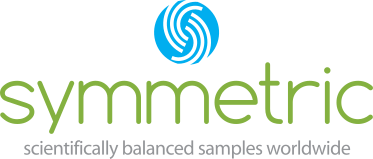- Call Us:
- 817-649-5243
- info@symmetricsampling.com
6 Tips for Sampling IT Decision Makers
August 11, 2020
When you look at the way the world has changed recently, it is undeniable that technology rules. If a company is not selling technology as a product or service, they probably use technology to lead or enable their business. And that pervasiveness means IT Decision Makers (ITDMs) are highly desirable and much sought-after marketing research respondents.
However, finding a good sample of ITDMs is easier said than done. ITDMs have a mind-boggling array of titles, and there is no master licensing authority to help you confirm if the person you think you are interviewing is actually in an ITDM role. Clearly specifying which respondents are considered to be qualified is the key to success. Are you looking for the Chief Information Officer, the Chief Technology Officer, the Vice President of IT, the Vice President of Applications Development, or all of them? Should the organization they work for have a distributed IT role or a centralized IT organization? Are you looking for the technology purchaser, the technology influencer (gatekeeper), or the technology user?
However, in spite of these challenges, qualified ITDM respondents can be found if researchers follow these tips:
- Validate, validate, validate. And then validate some more. Use every tool at your disposal to make sure your respondent is qualified to answer your survey. Your screener is all-important, as are trap questions with answers that make it easy for you to remove low-quality respondents. Also, just because you purchased an ITDM sample or have your own or your client’s customer/prospect list, do not assume that everyone is a qualified respondent. Keep testing them to make sure they can give you the high-quality information that you need.
- Be patient. ITDMs are busy people, and you will not get a 2- or 3-day turnaround with this group. Assume data collection will take 4 to 7 days for an online survey. If possible, run your survey over a weekend, as Monday-through-Friday fielding might not be optimal for ITDMs.
- You pay for what you get. Because ITDMs are rare and busy, you will need to increase the incentive that you pay for them to complete an ITDM survey. A rule of thumb is $1 to $2 per minute of participation, but you may have to pay even more for more senior or hard-to-find respondents. A Chief Information Officer will command a higher incentive than a Programmer, for example.
- No surprises. With ITDMs, you can conduct quantitative (most frequently online surveys), qualitative research (most frequently in-depth interviews), or a blended (hybrid) methodology. In all cases, it is critical to communicate clearly (preferably by email) about the requirements of participation. Tell them honestly how long they will be participating, so that they can plan accordingly and be willing participants at a time that works best for their schedule in order to devote the time needed to properly complete the task at hand.
- Conduct data-quality checks. Cheating on surveys is rampant when looking for this group, because of attractive incentives and unqualified respondents trying to complete by Googling their answers. After the data is collected, be vigilant in cleaning the data to remove low-quality and unqualified respondents. In addition to the usual “speedsters” (respondents who complete the survey much more quickly than others) and “straightliners” (respondents who give the same answer to every item in a matrix question), you should also add red herring questions to identify respondents to eliminate. Additionally, include open-ended questions related to their job or the survey topic to evaluate their level of knowledge. Yes, this does require a human being to read each answer and make the call to keep or toss, but the improvement in your data quality will be worth it.
- The last, and most important, is to use a dedicated ITDM panel. While many companies say they have a dedicated ITDM panel, most are not dedicated panels. Some companies simply search their usual panels for people with IT-sounding titles (see opening paragraph). A dedicated ITDM panel will have been thoroughly vetted to ensure that each respondent truly has the qualifications to be considered an ITDM. Additionally, with a dedicated ITDM panel, you can target business information (such as company revenue, employee size, or professional qualifications/experience) to fill your sample.
ITDMs – like many B2B samples – are getting more difficult to find, so it is essential you partner with a well-qualified and experienced panel provider to procure your sample. A challenging sample is usually a more expensive sample, but working with a partner who understands the challenges of your specific target will pay off at the end of the project with better quality data and insights.
Check out Symmetric’s Dedicated ITDM panel!Contact us today at info@symmetricsampling.com
